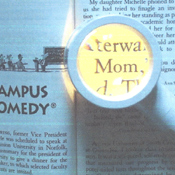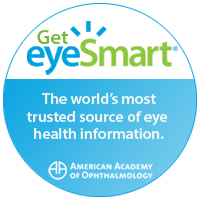
Low vision is a loss of eyesight, which makes everyday tasks difficult. A person with low vision may find it very difficult or even impossible to accomplish activities such as reading, writing, watching television, driving a car, and recognizing faces. When the person’s vision cannot be improved with regular eyeglasses, medicine or surgery, people with low vision need help to learn how to make the most of their remaining sight and keep their independence.
CAUSES OF LOW VISION
Low vision can be caused by eye injuries or by diseases such as:
- Macular degeneration
- Glaucoma
- Diabetic retinopathy
- Retinitis pigmentosa
These conditions can occur at any age but are more common in older people. Normal aging of the eye does not lead to low vision. It is very important to have regular eye exams by your ophthalmologist so that he/she can diagnose eye diseases, treat those conditions that can be helped, and start the process of vision rehabilitation.
LOW VISION TREATMENT
Vision rehabilitation can help people with low vision compensate for their vision loss. Those with low vision can learn new strategies to complete daily activities. By mastering new techniques and devices, one can regain confidence and live independently in spite of vision loss. This period of adjustment can be challenging for some. It requires patience, practice, motivation and the support of your doctor, family and friends. The amount of rehabilitation needed depends on your vision loss and what you want to be able to do.
LOW VISION AIDS
Many devices can help people with low vision make the most of their remaining vision and can enhance the quality of their life. Different devices may be needed for different tasks. Before purchasing a device, consider speaking to a trained professional who can help determine what will best meet your needs. You will need training and practice to become skilled at using any device.
OPTICAL LOW VISION AIDS
Optical low vision devices use lenses to magnify objects, making them easier to see.
Magnifying spectacles are stronger than ordinary glasses. They can be used for close up tasks such as reading and knitting. Using them requires holding the printed page pr object closer than usual in order to keep things in focus. With practice, it will become comfortable. An advantage with magnifying spectacles is that the hands remain free to hold reading material or to perform other tasks.
Stand magnifiers rest directly on the reading material, keeping the lens at the proper distance from the page. Some stand magnifiers also have a built in light. The ability to rest the magnifier on the page is helpful for those with a tremor or arthritis.
Hand Magnifiers are available in varying strengths to suit different people and different tasks. Reading material is not help as close to the face as with magnifying spectacles. Some models come with a built in light. You may wish to look in specialty stores to find high-quality and high-powered magnifiers. You may also find these devices through a vision rehabilitation professional.
Telescopes are used for seeing faraway objects. They can be handled like a pair of binoculars or mounted in a pair of eyeglasses.
Video magnifiers are electronic devices, which use a camera and television screen to enlarge printed material, pictures or small objects. They are adjustable and can enhance the material in different ways, such as making print appear darker. Technology is developing rapidly and electronic devices are becoming smaller, more portable and easier to use. Some may even be used for both distance and near tasks.
OTHER LOW VISION DEVICES AND TECHNIQUES
There are many low vision aids, devices and techniques to assist in making every day activities easier such as:
- e-book readers and audio books
- Large print books, newspapers, magazines, playing cards and checks
- High contrast and large number telephones, thermostat, watches and remote controls
- Talking watches, timers, books and blood pressure and blood sugar machines
- Computers that can magnify any printed material or picture, on screen or on paper
- Computers that read aloud what is on the screen
LIGHTING AND GLARE
Control of glare and good lighting are very important for people with low vision. Here are some helpful suggestions:
Use a bright light close to your reading material as it often improves vision. Adjust the light’s location for the greatest visibility without glare.
Use stronger light bulbs in dimly lit areas.
Wear a wide brimmed hat and/or tinted wraparound sunglasses, which can shield your eyes from overhead lights or from sunlight.
Lauderdale Eye Specialists provides this on-line information for educational purposes only and it should not be construed as personal medical advice. Lauderdale Eye Specialists disclaims any & all liability for injury or other damages that could result from use of the information obtained from this site.


